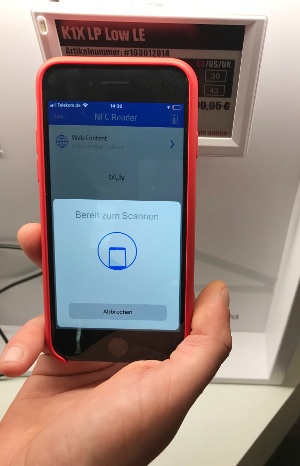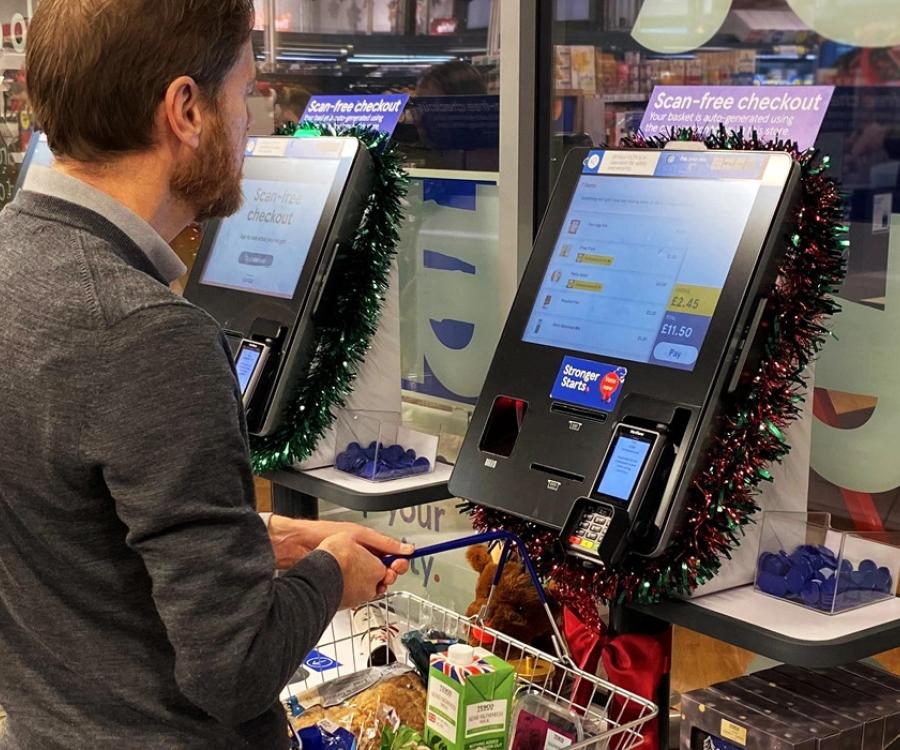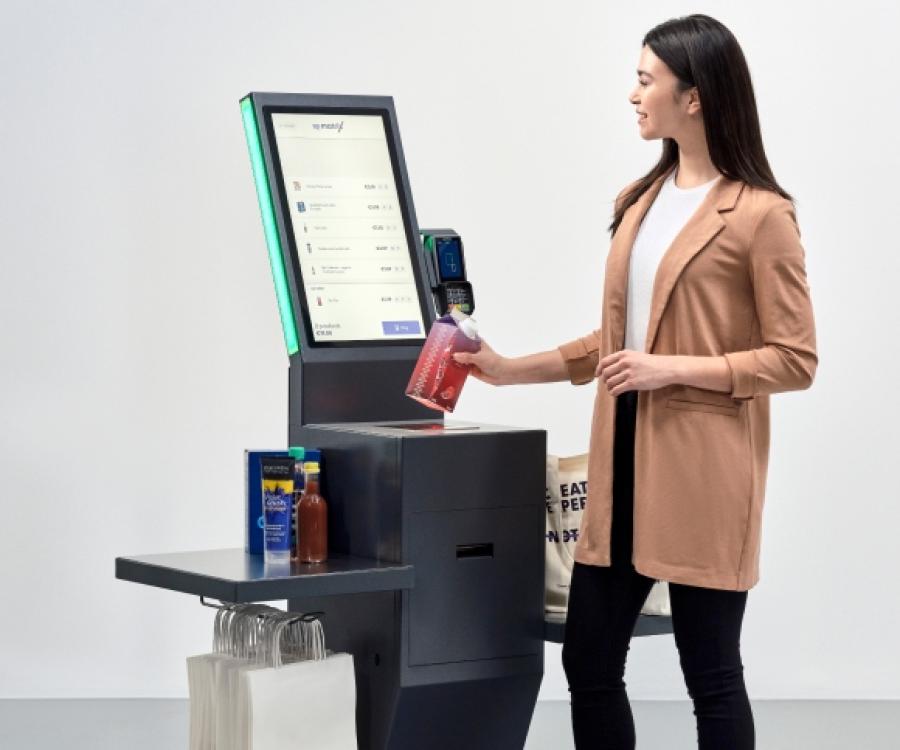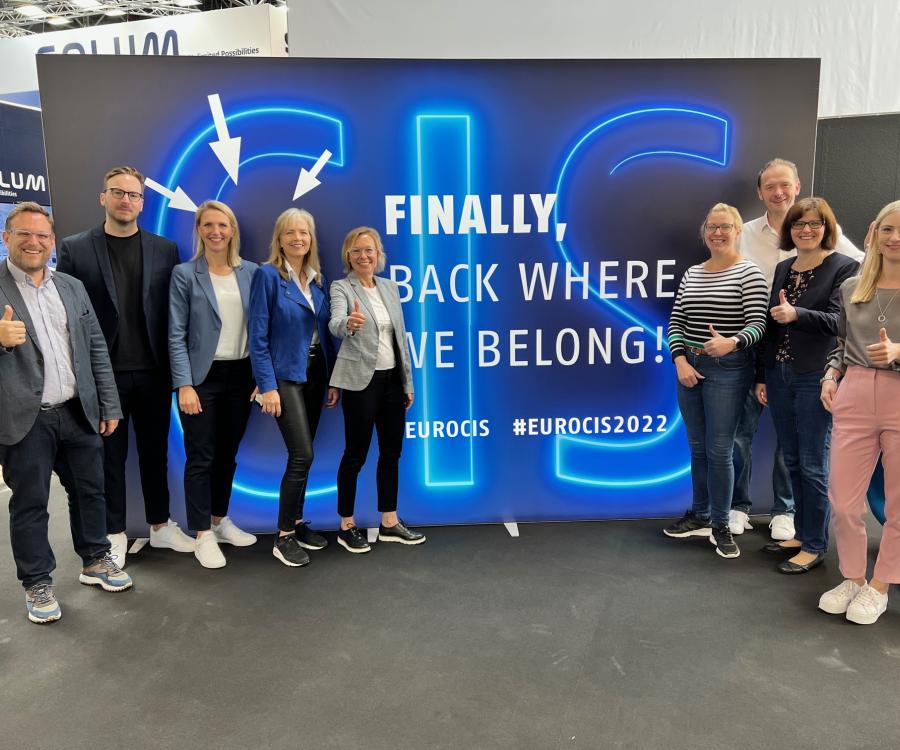It’s a customer’s dream: no more waiting in line at the checkout counter. At this point, consumers can already scan their purchases with their smartphones, pay and leave the store. Wirecard collaborates with SES-imagotag and makes this an option using unique new features of electronic price labels (ESL) and an e-commerce inspired payment process.
Alexander Hahn, Vice President POS Retail Solutions at Wirecard describes the added benefits for the retail sector and illustrates how this process works.

Mr. Hahn, you are now offering a scan-and-pay solution via ESL. How does Scan and Pay work?
When customers point their smartphones at the ESL, it sends product information such as price, ingredients etc. to an app or web URL. Customers then decide whether they want to purchase the item or not. If they do, they can use this as a mobile checkout.
This enables a “seamless checkout“. What is the benefit of that?
A survey revealed that 21 percent of customers are not in the mood to stand in line at the brick-and-mortar cash register after they decide on an item. Our seamless checkout solves this problem.
Which types of labels can you support?
We distinguish between the conventional electronic shelf labels customers would find at MediaMarktSaturn, and the smaller labels that are directly attached as tags on fashion and clothing items.
How do retailers make sure customers don’t leave with items they haven’t paid for yet?
Once the customer has paid and the transaction has been authorized and accepted, it is confirmed with a push notification via the app. Customers can show this text when they leave the store. This allows retailers to perform random checks at the door. Fashion retailers often prefer to reuse the tags. They can be removed at the exit in a fast lane for example.

What are the added benefits of this technology in terms of customer interaction?
This process is quick and convenient for customers, allowing them to also earn points and discounts thanks to coupons or loyalty programs. We can now also include value-added services such as couponing, personalized offers, and other product suggestions. If the customer scans a tag at a fashion retailer, the app can display: "Hello Thomas, you chose this suit. We suggest this white shirt and brown shoes that would complement your outfit.” Needless to say, the customer must opt-in when he logs in to the app and confirm that his data may be used for these purposes. The app also features the customer’s purchase history.
How can retailers utilize the data the app has generated?
Retailers benefit because they are able to see the success of coupon promo codes or campaigns via the conversion rates. Once an article has been paid, the app also sends a message to the ESL and simultaneously connects to the linked retail inventory management system. Retailers are able to view inventory changes in real-time.
How can this data be processed?
We developed our Data Analytics Suite to accommodate a special use case. This enables retailers to analyze the data we collect, answering questions like how often the customer visits the store, what items and colors he prefers, whether the customer is male or female and his/her age. This allows retailers to tailor and manage their campaigns accordingly.
Scan-and-Pay combines ESL with your payment solution and value-added services. How did you come up with this idea?
We realized that the technology has advanced to the point where it allows us to unite the electric shelf labels and payment options as is the case in e-commerce. Together with our partner SES-imagotag, the global leader in ESL, we are already implementing the solution in several pilot projects throughout Germany and the DACH region (Germany, Austria, and Switzerland). We are essentially able to apply it wherever we have an e-commerce license agreement.
Where do you see the biggest advantages of the new features?
Retailers have a hard time attracting more customers to their stores. Our solution comes very close to an online store experience. And even though this is a digital process, it enables customers to try on and touch a suit, which is not possible when they shop online.










